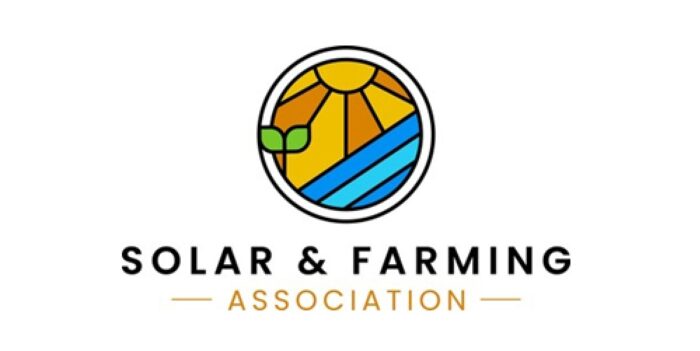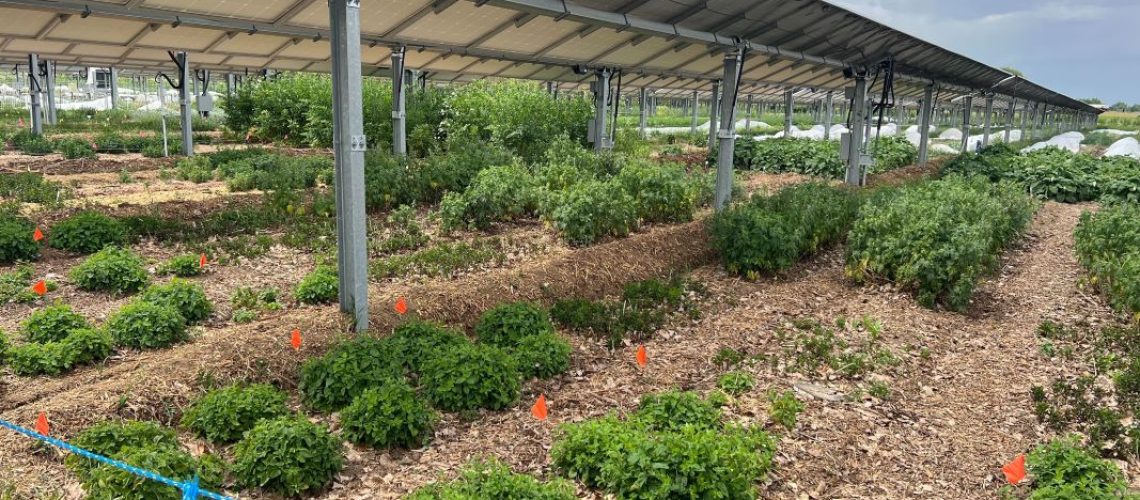U.S. solar and farming advocates have come together to support a nationwide policy milestone to advance agrivoltaics. The Solar and Farming Association (SAFA) announced the initiative that will strengthen rural farming families and economies.
At the 2025 American Farm Bureau Federation (AFBF) convention on Jan. 28 in San Antonio, Texas, delegates voted to include the prioritization of solar projects with verified shared agricultural use in the AFBF’s policy book. This paves the way for supporting more home-grown American energy while ensuring that farmland remains in production.
“This milestone demonstrates the growing recognition that solar development and farming can, and should, coexist,” said Lucy Bullock-Sieger, VP of strategy at Lightstar and SAFA cofounder. “By adopting agrivoltaics policies, the Farm Bureau has solidified its commitment to a resilient future for America’s farmers and rural communities.”
The AFBF policy book, rooted in input from state Farm Bureaus, serves as a guiding framework for all state Farm Bureau organizations across the United States. With this new policy, state Farm Bureaus now endorse solar projects that incorporate shared agricultural use, such as pollinator-friendly solar, grazing opportunities, or crop co-location. This alignment with innovative agrivoltaics practices ensures that renewable energy projects are developed in harmony with the land’s historical agricultural purpose.
Rural growth + renewable energy
Agrivoltaics — the co-use of land for both solar energy and agriculture — offers a win-win solution to two pressing challenges of today’s world. By integrating solar arrays with farming operations, these projects create additional revenue streams for farmers, enhance land use efficiency, and strengthen rural economies which are the backbone of our country.

SAFA applauds the Farm Bureau for its leadership in supporting agrivoltaics, which underscores the critical balance between renewable energy expansion and farmland preservation. SAFA particularly commends the Illinois and Indiana Farm Bureaus and their local members for bringing agrivoltaics to the national organization. Grassroots action by dedicated farmers like Matt Riggs of Champaign County, Illinois, who partnered with the Illinois Farm Bureau to adopt the supportive policy, confirms the strong organic interest in this common-sense solution.
“I see agrivoltaics as a way to deliver reliable, superior profitability to farming operations of all sizes,” Riggs said. “Adding another income stream to a farm is more important than ever, given the current down cycle in grain markets. Agrivoltaics could be this generation’s best tool for ensuring family farmers’ independence and survival.”
Advancing rural partnerships
This decision is more than just a policy update — it’s a call to action. SAFA looks forward to building coalitions with farming communities, solar developers, land grant universities and policymakers to implement this vision across the country. Together, we have an opportunity to strengthen rural America by combining agricultural stewardship with renewable energy innovation.
“America’s farmland is one of our most valuable resources, and this policy ensures that farmers have a seat at the clean energy table,” said Mike Marsch, chief development officer at BlueWave and SAFA cofounder. “Investing in agrivoltaics is an investment in rural livelihoods and a secure future for generations to come.”
Tags: agrivoltaics



